The Corpach Shipwreck: A Guide to the Old Boat of Caol, Scotland’s most photogenic shipwreck
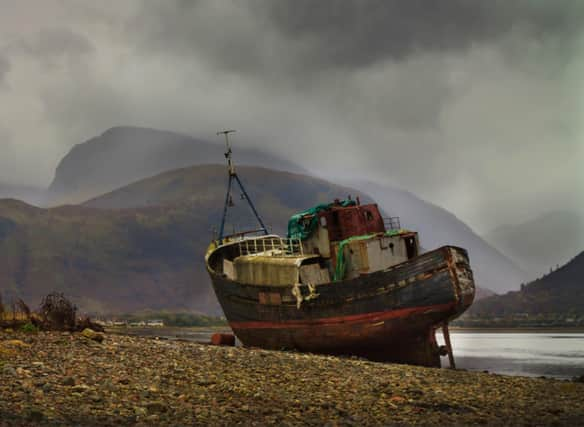

As a country that is almost completely surrounded by water in the north-east Atlantic, it is no surprise why Scottish history is inextricably linked to the sea. Scots (or ‘Scotti’) themselves first arrived in this land by way of Ireland as they crossed the sea, and even our ancient forebearers like the Picts were described as talented seafarers.
Regions of Scotland such as Orkney were said to be home to Britain’s ‘first farmers’ around 6,000 years ago and some historians suggest that these communities traded with their Scandinavian neighbours etc. With an impressive coastline (and suitably impressive lighthouses to match) it makes sense that Scotland has many natural harbours that have made it an apt environment for boating and this includes the picturesque Corpach near Fort William in the Scottish Highlands.
Advertisement
Hide AdAdvertisement
Hide AdWith natural protection from the Corpach Basin, the site has played a crucial role over the years as a harbour during both the First and Second World War. History truly comes to life, however, when we gaze upon the Corpach shipwreck or ‘Old Boat of Caol’ which can be found lying majestically - yet at an odd angle - by the shores of Loch Linnhe that are overlooked by Ben Nevis; the tallest mountain in the United Kingdom.
The picturesque site is further complemented by its intriguing heritage, as Hidden Scotland reports: “Whilst local lore suggests it emerged from stormy waters to take in the majesty of nearby Ben Nevis, no one has ever fully understood why the boat – built in 1975 – emerged from the water and onto the shore.”
For all aficionados of photography and/or history, here is an overview of the Corpach shipwreck including the most important details like what it is, where you can find it, how it arrived at these shores, and if it’s the only Scottish vessel of its kind here.
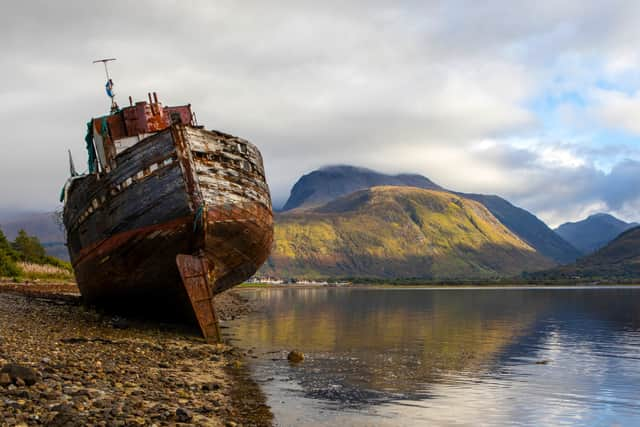

What is the Corpach Shipwreck?
The Corpach Shipwreck is a former fishing boat that sits at an odd angle on the sands by Loch Linnhe. The rusting remains of the 26 metre-long boat, which was once used to catch herring and mackerel in the North Sea, was discovered by residents of Caol in 2011.
As the wreck rests on the Caol side of the Caledonian Canal, it is often referred to as The Old Boat of Caol. Specifically, however, it is a fishing vessel known as ‘MV Dayspring’ (later renamed ‘Golden Harvest’) that was first built in 1975 by J&G Forbes in Sandhaven, Aberdeenshire.


History of the Corpach Shipwreck
The boat’s historical career as a fishing vessel saw it shipped from Scotland to Kilheel in Northern Ireland where it remained in use. By 2001, it was returned to Scotland and moored at Kinlochleven Pier (which means ‘Head of Loch Leven’ in Scottish Gaelic) which is south-east of Fort William.
It remained here until 2009 and the boat owners had plans to convert it into a floating restaurant; the Scottish weather had other plans, however. After the old fishing vessel was transported to Camusnagaul Bay on Loch Linnhe (via new owners) the “craft broke free from its mooring during the fierce storm” that hit in 2011, according to The Herald.
With support from the local coastguard, the vessel was guided to the beach, between Caol and Corpach village, where it has lain ever since.
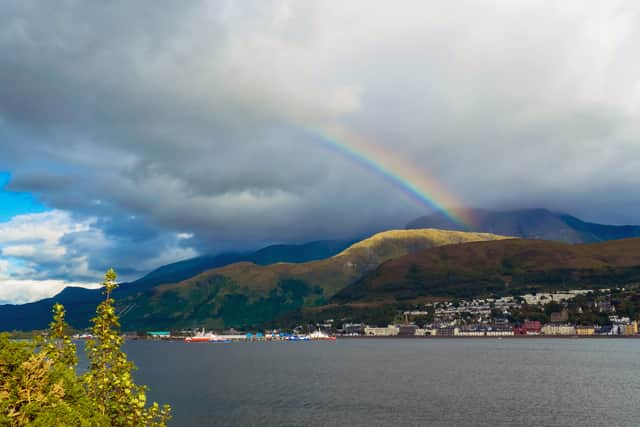

How can I get there?
Advertisement
Hide AdAdvertisement
Hide AdYou will find the Corphach shipwreck on a stretch of beach between Caol and Corpach, a mere 5-minute drive from the town of Fort William. This is a public beach so you needn’t worry about barriers or paying entry fees etc. In reference to both villages close to the shipwreck, it is known as the ‘Corpach Wreck’ or the ‘Old Boat of Caol’ interchangeably.
However, the latter name is the one to use if searching for its location on Google Maps. The closest village to the landmark is Corpach which translates from Gaelic as “field of corpses”. The name is said to come from its history as the resting place for coffins of chieftains who were to be buried in Iona; an island off the southwest coast of Mull in the Inner Hebrides.
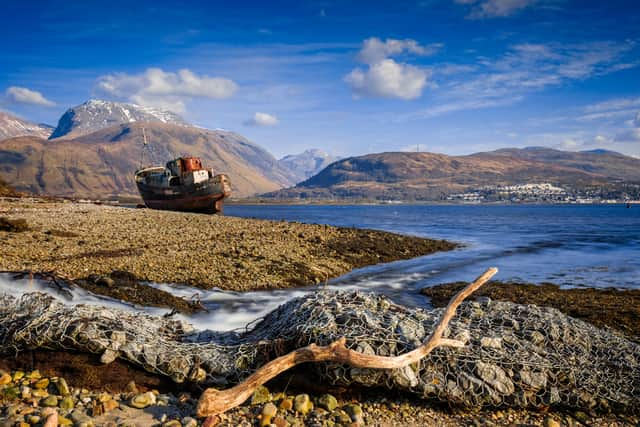

When is the best time to visit?
If you’re interested in photography, we recommend visiting the shipwreck on a clear day. The weather in Scotland can be temperamental, so checking the weather forecast ahead of time is your best bet. That said, both warm and cold conditions have their benefits here.
On a clear Autumn day, for example, you can visit the boat at sunrise or sunset for some incredible lighting on your photographs. During winter or any drizzly day, however, the moody backdrop of Ben Nevis enveloped in rainwater or snow can make for exceptional captures too.
Either way, the tide will affect the land available for photography, so check resources like BBC Weather ahead of time so you can strategise and maximise photo opportunities.
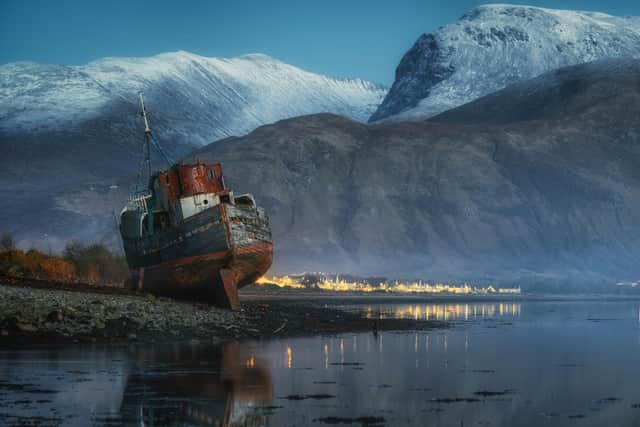

Are there other shipwrecks nearby?
Located on the same beach as the Old Boat of Caol, visitors may stumble upon a marooned sailing boat with a faint inscription that reads “Argo”. There is little information about this mysterious vessel and it is widely thought that it is merely another boat that faced the wrath of Scotland’s storms.
It could be a reference to a ship named ‘Argo’ in the story of the ‘Golden Fleece’ from Greek mythology. According to Mythology Source:
“The story contains many elements that were popular in Greek legends. An exiled prince, Jason, assembled a crew of heroes to sail to the far-off land of Colchis in search of the Golden Fleece, which would allow him to retake his kingdom.”
The Fitzwilliam Museum says that the boat “used for the quest was the Argo, whose name means “swift”, and she was the fastest ever built.”
Comments
Want to join the conversation? Please or to comment on this article.
